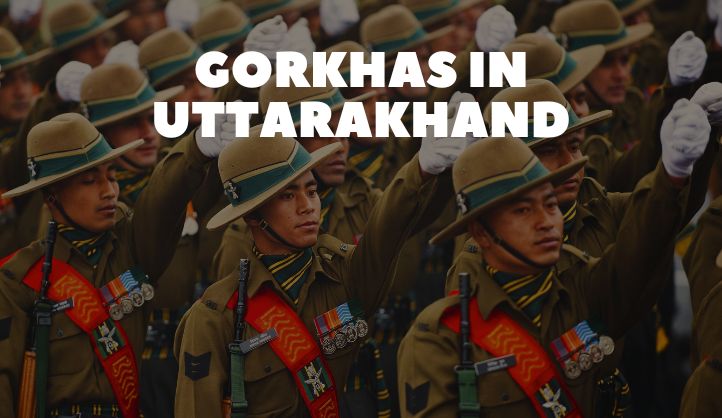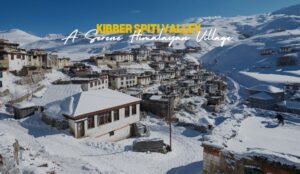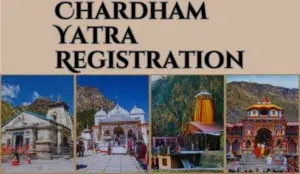The vibrant state of Uttarakhand, nestled in the Himalayas, is not just a haven for nature lovers but also home to a thriving Gorkha community. Their presence in the region stretches back centuries, leaving an indelible mark on its history, culture, and demographics. This blog delves into the story of the Gorkhas in Uttarakhand, exploring their fascinating past, their rich culture, and their significant contribution to the state’s identity.
A Historical Legacy – The Gorkha Rule in Uttarakhand
The Gorkhas, originally from Nepal, embarked on a territorial expansion in the 18th century. By 1804, they had conquered the entire Garhwal region of Uttarakhand, establishing a 12-year rule. While the period witnessed some administrative restructuring and taxation reforms, it was also marked by skirmishes with the British East India Company. The Anglo-Nepalese War (1814-16) ultimately led to the Gorkhas being pushed westward, with the British taking control of parts of Garhwal.
A Flourishing Community – Gorkha Culture in Uttarakhand
Despite the shift in power, the Gorkhas remained an integral part of Uttarakhand’s social fabric. Today, they constitute a significant population, particularly in the Kumaon and Garhwal regions. Their influence is evident in various aspects of life:
- Language: Nepali, their native tongue, is widely spoken alongside Hindi and regional dialects.
- Religion: The Gorkhas predominantly follow Hinduism, with a strong emphasis on deities like Shiva, Durga, and Krishna.
- Festivals: Dussehra, celebrating the victory of good over evil, is observed with great enthusiasm. Diwali, the festival of lights, and Bhai Tika, a day to honor brother-sister bonds, are also major celebrations.
- Cuisine: Gorkha food is known for its simplicity and deliciousness. Momos, steamed dumplings with savory fillings, are a staple, along with curries flavored with distinct spices and fresh herbs. Sel Roti, a ring-shaped bread made on a griddle, and Gundruk, a fermented green leafy vegetable soup, are other popular dishes.
- Clothing: Traditionally, Gorkha men wear the Daura Suruwal, a combination of a long shirt and trousers, and a topi (cap). Women adorn themselves with colorful sarees and Kurtis (tunics).
- Martial Arts: The Gorkhas are renowned for their martial prowess. Their use of the Khukuri (a curved knife) is a symbol of their courage and is often showcased in cultural performances.
The Gorkha Legacy – Contributions and Significance
The Gorkhas have significantly contributed to Uttarakhand’s development:
- Defense: Renowned for their bravery, Gorkhas have served with distinction in the Indian Army for over 200 years. Regiments like the Gorkha Rifles and the Assam Rifles have a large Gorkha representation.
- Agriculture: Gorkhas are skilled farmers, playing a crucial role in cultivating crops on the hilly terrains of Uttarakhand.
- Tourism: Their knowledge of the Himalayas and their warm hospitality make them valuable assets in the state’s tourism industry. Many Gorkhas operate guesthouses, homestays, and trekking expeditions, providing visitors with a unique perspective of the region.
How to Reach Uttarakhand
Uttarakhand is well-connected by air, rail, and road. Here’s a quick guide:
- By Air: The Jolly Grant Airport in Dehradun is the primary airport serving Uttarakhand. Other airports like Pantnagar Airport (Pantnagar) offer limited connectivity.
- By Train: Major cities like Haridwar, Rishikesh, and Dehradun are well-connected to major Indian cities via train networks.
- By Road: Uttarakhand has a well-maintained network of national highways and state roads. Buses operated by state transport corporations and private companies provide connectivity between major towns and cities.
The Best Time to Explore Uttarakhand
Uttarakhand experiences distinct seasonal variations. Here’s a breakdown of the ideal time to visit:
Summer (March-June)
Pleasant weather prevails in most regions, making it suitable for sightseeing and outdoor activities. However, the lower hills can get quite hot.
Monsoon (July-September)
The state receives moderate rainfall, creating lush greenery. However, landslides can occur in some areas, and trekking might be challenging.
Winter (October-February)
The higher Himalayas experience snowfall, transforming the landscape into a winter wonderland. However, temperatures can drop significantly, and some high-altitude areas become inaccessible.
Nearby Places to Explore
Uttarakhand is a treasure trove of scenic beauty and cultural experiences. Here are some captivating destinations to explore alongside learning about the Gorkhas:
Dehradun
The capital of Uttarakhand, Dehradun, boasts the prestigious Indian Military Academy (IMA), where generations of Gorkha soldiers have trained. Visit the IMA museum to learn about their valor and military history.
Nainital
Nainital, A picturesque hill station, touted as the “Queen of Hills,” attracts tourists with its serene lake, scenic beauty, and colonial charm. Explore the Tibetan Market, a vibrant hub where you can find Gorkha handicrafts and souvenirs.
Ranikhet
Nestled amidst pine forests, Ranikhet offers breathtaking Himalayan views. Visit the Army Golf Course, a legacy of the Gorkha regiment stationed there, and enjoy a round of golf amidst stunning scenery.
Almora
A charming hill town known for its literary heritage, Almora also has a significant Gorkha population. Visit the Kasar Devi Temple, a Hindu shrine revered by both Hindus and Gorkhas.
Munsiyari
Munsiyari is a remote village at the eastern tip of Uttarakhand and is a paradise for nature lovers and trekkers. Explore the surrounding villages inhabited by Gorkhas and experience their unique way of life.
Jim Corbett National Park
India’s oldest national park is home to diverse flora and fauna. Be on the lookout for elusive tigers and learn about the contribution of Gorkha forest guards to wildlife conservation efforts.
Conclusion
The Gorkhas of Uttarakhand are a community deeply woven into the state’s social fabric. Their legacy of valor, rich culture, and contribution to various aspects of life make them a vital part of Uttarakhand’s identity. Exploring Uttarakhand provides an opportunity not only to witness breathtaking landscapes but also to delve into the fascinating history and vibrant culture of the Gorkha community.
FAQs About Gorkhas in Uttarakhand
1. What is the difference between Gorkhas and Nepalis?
Gorkhas are an ethno-cultural group with Nepali heritage. While all Gorkhas are Nepali speakers, not all Nepalis identify as Gorkhas. The term “Gorkha” often carries connotations of martial prowess and a specific cultural identity associated with the Indian Gorkha community.
2. Can I learn Nepali in Uttarakhand?
Absolutely! Nepali is widely spoken in Uttarakhand, especially in areas with a high Gorkha population. Language schools and private tutors might be available in major towns. Learning basic Nepali phrases can enhance your interactions with the local Gorkha community.
3. What are some Gorkha festivals I can experience in Uttarakhand?
Dussehra, Diwali, and Bhai Tika are some major festivals celebrated with enthusiasm by the Gorkha community. Attending these celebrations allows you to experience their rich cultural traditions and vibrant spirit.
4. Is it safe to travel to Uttarakhand during the monsoon season?
Monsoon can bring landslides in some areas. It’s advisable to check weather forecasts and road conditions before embarking on a trip during this time. Opting for lower-altitude destinations can minimize potential risks.
5. What are some traditional Gorkha dishes I can try in Uttarakhand?
Momos, a steamed dumpling delicacy, is a must-try. Explore other options like Sel Roti, a ring-shaped bread cooked on a griddle, Gundruk, a fermented green leafy vegetable soup, and various curries prepared with unique spices and herbs.





